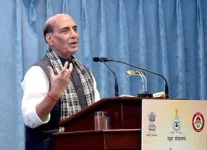- Views: 485
- Replies: 5

In a world of evolving strategic threats, maintaining a robust nuclear command authority is crucial for deterrence.
Lt Gen (Dr) Prakash Menon (retd), Director of the Strategic Studies Programme at the Takshashila Institution and former military adviser to the National Security Council Secretariat, advocates for a solution to ensure survivability: the airborne command post.
The Challenge of Fixed Installations
Advances in satellite-based geospatial monitoring have significantly reduced the effectiveness of concealing underground facilities.Traditionally housing strategic command centers, these installations are now increasingly vulnerable to detection and targeted strikes.
Disrupting a fixed facility's communication channels jeopardizes the command and control essential for nuclear deterrence.
The Airborne Advantage
An airborne command post addresses this problem through inherent mobility and survivability. Unbound by a fixed location, these platforms strategically navigate vast airspace, evading detection and potential attacks.Further enhancing security, the use of decoys and other countermeasures creates operational uncertainty for adversaries.
Endurance Considerations
While airborne platforms naturally have limits based on fuel capacity, aerial refueling mitigates this constraint and ensures operational readiness. The benefits of increased survivability and flexibility far outweigh fuel limitations.Lt Gen Menon proposes a dual-pronged approach: a traditional underground chain of command complemented by an airborne one, creating robust redundancy.
Safeguarding Nuclear Command Authority
The core purpose of an airborne command post is to ensure the survivability of the nuclear command authority.This additional layer of protection in a complex geopolitical landscape strengthens deterrence stability.
An airborne facility resists adversary efforts to undermine or disrupt the command structure needed for effective nuclear response.

